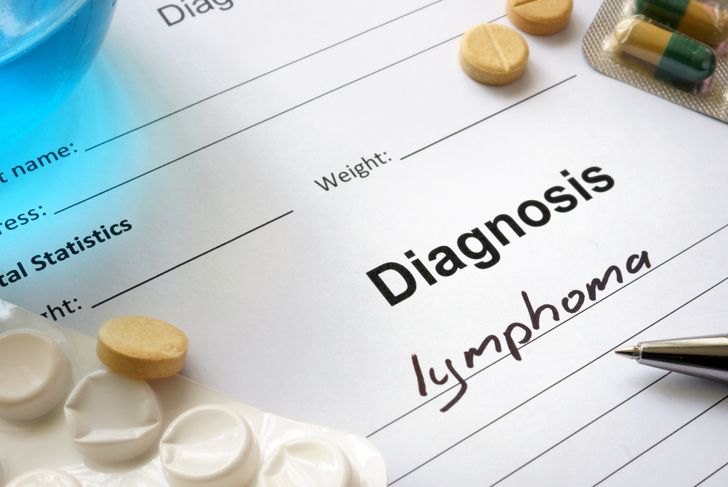Lymphoma is one of a family of serious diseases. Spotting it early is of supreme importance. Unfortunately, this is often difficult because lymphoma shares many signs with more common, but far less serious illnesses. Mistakes, therefore, happen a lot in the early stages of the disease. In these situations, you might have to wait until the signs of the disease linger for a long time before you get a diagnosis. Sometimes the signs are local to one part of the body. Or, they may spread across the patient’s body. Lymphoma occurs in over 60 different forms, but they are all more or less grouped into two main divisions. These are Hodgkin and non-Hodgkin lymphoma. Learning to spot the signs of lymphoma early is the key to successful treatment.
Swollen Lymph Nodes
Many people suffer from a swelling of the lymph nodes from time to time. This swelling usually occurs in the neck, armpits or some other area of their upper body. In most cases, an infection causes the swelling and inflicts considerable pain. The swelling caused by lymphoma, however, is usually painless. This can make the disease more insidious. After all, most people naturally assume a painful swelling is more serious than a painless one. This lack of discomfort can cause many people to delay medical attention. Swollen lymph nodes are often the first sign of lymphoma, but around half of all cases never develop the symptom. In any case, you should see a doctor who can check out unexplained swelling as early as possible.
Chills and Unexpected Body Temperature Changes
Chills and rapid body temperature changes are usually a sign that something is not right. Influenza and the common cold also cause these symptoms. Most people can ride these diseases out without long-term consequences. Once in a while, however, these symptoms are a sign of lymphoma. It’s certainly not the only diagnosis. It isn’t even the most common cause of temperature fluctuations. But any out-of-the-ordinary signs such as these are enough to see a doctor for. Be especially concerned if they last longer than the few days it usually takes to get over a cold or flu.
Running a High Fever
High fevers are also a typical lymphoma sign. This is especially likely if the fever comes on at night. Like chills and hot flashes, fever is also a common symptom of less-concerning ailments. That means it’s too early to leap to conclusions at the first temperature rise. Fever becomes a potential sign of lymphoma when it lingers beyond a few days without breaking. Ironically, high temperatures are less likely to be a sign of lymphoma. Persistent, low-grade fevers sometimes are an early sign of the disease. Lingering fever is a good reason to set an appointment to see a doctor.
Heavy Sweating During the Night
Lymphoma releases certain hormones that bring on heavy nighttime sweats. Of course, these sweats can also happen during the day. The sweating of lymphoma is often so heavy it easily soaks pajamas and nightdresses. Sometimes it even soaks through the patient’s bedding. Like so many other symptoms, night sweats are also common with other ailments and are not cause for immediate alarm. Be sure to mention it to your doctor, however. At the very least, night sweats are something to consider when you’re being diagnosed for your symptoms.
Itchy Skin
One of the chemical changes lymphoma triggers in the body can cause intense itching in various parts of the skin. Sometimes, but by no means always, this itching is accompanied by a red rash. Lymphoma-related itching usually occurs on the hands and feet. It can also spread up the arms and legs to reach the whole body. This itching is usually much worse at night. It’s also likely to get worse in hot weather, to the point that many people find it hard to sleep at night.
Breathing Problems
Lymphoma often strikes the lungs and lower respiratory tract. This can cause a serious cough. This cough lingers for a long time and brings shortness of breath. Occasional coughing is normal, of course, and even a persistent cough is not necessarily a sign of real problems. A cough that doesn’t go away, however, or one that resists the usual home remedies, might signal serious issues. Most often, this cough happens because swollen lymph nodes in the chest press on the sides of the lungs. This can cause enough irritation to become a problem, especially when you lie down.
Altered Skin
Lymphoma often causes visible skin changes. On top of the itchy rash it causes in some people, the disease occasionally produces scaly or rough patches of skin. Sometimes these spots are raised and flat on top. On the other hand, sometimes they’re lumpy, or they might be flush with the surrounding skin. Often, therefore, these signs give the impression you have eczema or psoriasis. Skin signs like these usually go along with less-serious forms of lymphoma. In these cases, the disease rarely spreads beyond the visibly affected areas. Every form of lymphoma is cause for concern, of course, and it takes a good dermatologist to correctly identify these skin irregularities.
Pain
The lymph node swellings caused by lymphomas are not normally painful. All the same, the disease can still cause considerable pain and discomfort. Swollen lymph nodes as a result of infection are usually the source of pain in themselves. However, the painless swelling of a malignant lymph node causes discomfort by pressing on the soft tissues surrounding it. This kind of pain most commonly reaches the abdomen and lower back. In advanced cases of lymphoma, the areas under pressure can extend down to the bone. This typically causes a great deal of pain for most patients.
Unexplained Weight Loss
When you lose a lot of weight, you’ve usually been exercising and watching your diet. When the loss is too rapid, however, or when there’s no obvious cause for it, it can be a sign of serious issues. Lymphoma-affected cells are energy hungry. So are the immune cells working to fight them off. Between the two of them, these cells can exhaust the body’s fat reserves. This process happens at a much higher rate than normal activity does. Eventually, energy burned in this way leads to rapid drops in both body weight and fat composition. The warning sign for most people is a drop of 5 percent of your total body weight in a single month. Be especially wary if this is not caused by a change in diet or exercise patterns. Similarly, a 10-percent drop in six months is also a potential warning sign for lymphoma.
Fatigue
Nobody knows why most forms of lymphoma cause intense fatigue. Some researchers suspect this may happen because of the high energy consumption causing the weight loss. Just about everybody feels tired from time to time, of course. However, fatigue becomes a potential sign of lymphoma when it happens a lot and without a clear cause. Sudden drops in energy, or the feeling of being worn out with little or no physical activity, is one of the most common symptoms for lymphoma patients. Unfortunately, as with so many of the disease’s other symptoms, fatigue is a part of many other conditions. It might also happen when you have nothing wrong at all. This makes finding the real cause of the problem difficult or impossible without a lot of testing.

 Home
Home Health
Health Diet & Nutrition
Diet & Nutrition Living Well
Living Well More
More




















